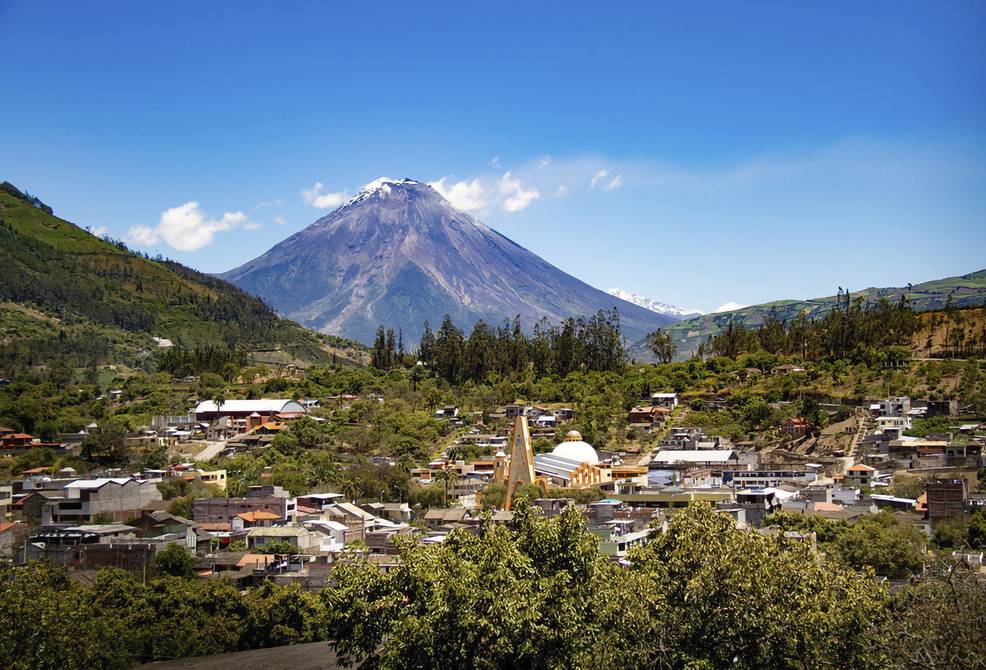Magical Towns of the Andean highlands
There are the 13 Magical Towns in the Ecuadorian Highlands. These towns are recognized by the Ministry of Tourism for their cultural, historical, and natural wealth, offering visitors a unique experience. Each town has a population of fewer than 100,000 inhabitants and meets specific criteria set by the Ministry.
Below is a list of the 13 Magical Towns located in the Andean highlands, along with their descriptions as provided by the Ministry of Tourism. The provinces they belong to are indicated in brackets.
Patate (Tungurahua): Known as the Valley of Eternal Spring due to its wonderful climate. The town is rich in cultural syncretism, reflected in its religious devotion to the Lord of the Earthquake.
Alausí (Chimborazo): Called the City of Five Heritage Sites, it features narrow cobblestone streets, Republican-style houses with flower-adorned balconies, and iconic landmarks such as the Devil’s Nose railway, the historic center, the town clock, nearby villages, waterfalls, and stunning landscapes.
Cotacachi (Imbabura): A city of contrasts, where churches, chapels, sculptures, and stained-glass windows blend with lagoons, trails, nature reserves, and productive farmlands. A stroll through its wide streets reveals its rich history and cultural diversity.
San Gabriel (Carchi): A religious tourism destination featuring the stunning La Paz Grotto, home to a giant cave, a suspension bridge, a tunnel, and three thermal pools. The area also boasts natural wonders like the famous Arrayanes Forest, Paluz Waterfall, and El Salado Lagoon.
Guano (Chimborazo): Known as Ecuador’s Handicraft Capital, Guano is renowned for its fine rug weaving. Surrounded by volcanoes and mountains, it offers breathtaking landscapes. A must-visit is the City Museum, which houses the mummy of a Franciscan friar.
San Antonio de Ibarra (Imbabura): A beautiful town famous for its skilled artisans, who have inherited the traditional craft of wood carving.
Rumiñahui (Pichincha): A historic valley rich in heritage, featuring a charming historic center and a main church. Visitors can admire adobe houses with tiled roofs, wooden balconies, and picturesque windows. The town’s spring-like climate and exquisite gastronomy make it a delightful destination.
Azogues (Cañar): Nestled in an inter-Andean valley along the Burgay River, Azogues blends modern and traditional architecture. It boasts 135 historical sites, including the Sanctuary of the Virgin of the Cloud, the Church of the Lord of Flowers, the Cathedral, museums, and cultural centers.
Chordeleg (Azuay): A town known for its colonial churches, adobe houses, and natural attractions like Pungohuayco, the Three Lagoons, Porrión Ecological Park, and the Tasqui Waterfall. Deep-rooted local traditions make it a fascinating destination.
Pimampiro (Imbabura): An ideal spot for family recreation and relaxation in a natural setting, offering Andean bear watching, adventure activities, and cultural experiences. For centuries, Pimampiro has preserved its intercultural identity, fostering harmonious coexistence among mestizos, Afro-descendants, and Indigenous communities who keep their traditions alive.
Calvas (Loja): Blessed with diverse climates, this productive canton boasts a variety of agricultural crops, including corn, vegetables, and high-quality coffee, contributing to a rich and varied gastronomy.
Cayambe (Pichincha): Known as the Land of Waterfalls, Flowers, and Mountains, Cayambe sits at the foot of the snow-capped Cayambe Volcano. It is home to a segment of the Qhapaq Ñan, a UNESCO World Heritage Site. Other highlights include the Middle of the World site, a deer breeding center, the Quitsato Solar Clock, Hacienda Guachalá, the Tingo Waterfalls, and the Guachalá Boulder.
Saraguro (Loja): This region features natural attractions such as Baño del Inka, Washapamba Cloud Forest, the Sleeping Lion, Salado de Turucachi, Putushio Hill, Chinchilla Lagoon, and Arcos Hill, offering a unique blend of history, culture, and breathtaking scenery.
Picture: Patate.
